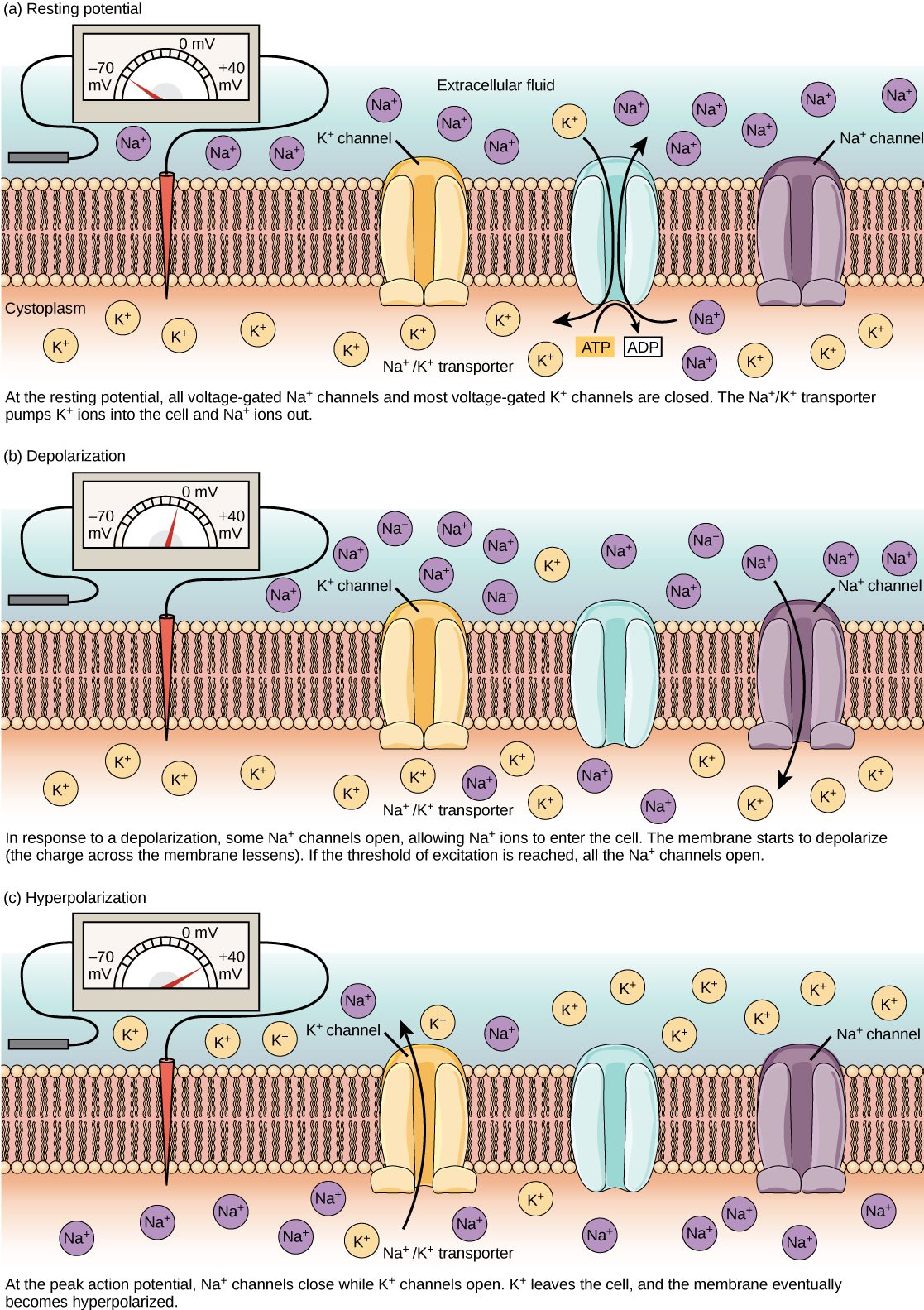Playlist
Show Playlist
Hide Playlist
Membrane and Transepithelial Potential
-
Slides 05 EpithelialTransport GeneralPhysiology.pdf
-
Download Lecture Overview
00:01 How do we measure membrane potential? In a normal, symmetrical, or general cell, we put a little recording electrode within the cell and have a secondary electrode in a bath or in the fluid around it. 00:17 That gives us our membrane potential. 00:20 Epithelial tissue is different and that it has a number of different membrane potentials. 00:26 The apical membrane has a membrane potential, the basolateral membrane has a membrane potential, and there’s a membrane potential across the whole epithelial cell itself. 00:40 So we have three membrane potentials to take into account: the apical, the basolateral, and the complete endothelial cell’s membrane potential from one side to the other. 00:54 So let’s go through some examples to practice this because this is a very different way of looking at voltages. 01:02 It’s both across the membrane, across the second membrane, and then across the whole cell line. 01:09 If we have an apical membrane voltage of let’s say minus 60 millivolts, we have a basolateral voltage of about minus 80 millivolts, therefore, there is a 20-millivolt difference between those two sides. 01:27 So, it’s possible to involve ions differently that might want to move across the whole entire tissue that don’t necessarily want to move across one membrane or the other. 01:40 Let’s keep going through some examples of this. 01:45 Let’s use the transport of sodium and chloride as an example. 01:50 If we have a voltage that is set up by a sodium-potassium ATPase, we have sodium traveling in across the apical membrane and then maybe potassium traveling across the basolateral. 02:05 It can set up a voltage difference across the membrane and that voltage difference will want to drive chloride across through those tight junctions. 02:18 Without the transepithelial voltage difference, the chloride would not want to travel in this direction. 02:24 So it’s traveling towards a negative charge on the apical membrane to a positive charge on the basolateral. 02:33 The positive charge is set up by positively charged ions leaving the basolateral side. 02:39 A second example is looking at sodium chloride secretion. 02:45 Here, we are going to use the sodium-potassium ATPase as the initial setup on the basolateral membrane. 02:53 We also have another channel that it’s going to cotransport three things: sodium, chloride, and potassium. 03:01 These are sometimes known as NCCK channels. 03:06 This allows the co-transport of all three of these ions into the cytosol. 03:11 Chloride then is allowed to travel across the apical membrane and that sets up a negative charge across the apical membrane. 03:21 If we look at this, that will want to pull sodium across with it. 03:29 Because sodium will want to travel from a positive to a negative, and therefore, this transepithelial gradient allows for this negative pull across the transepithelial surface or the leaky tight junctions.
About the Lecture
The lecture Membrane and Transepithelial Potential by Thad Wilson, PhD is from the course Membrane Physiology.
Included Quiz Questions
An active electrode is placed in the interstitial fluid while a reference electrode is in the lumen and a negative transepithelial voltage is registered. Which ion would move out of the lumen into the interstitial fluid?
- Potassium
- Chloride
- Phosphate
- Oxide
- Iodide
How many different membrane potentials do epithelial cells have?
- Three
- One
- Two
- Four
- None
If an epithelial cell apical membrane voltage (Va) is -80mV and the basolateral membrane voltage (Vb) is -60mV, what is the transepithelial voltage (Vt)?
- -20 mV
- -30 mV
- -40 mV
- -10 mV
- 0 mV
Customer reviews
5,0 of 5 stars
| 5 Stars |
|
5 |
| 4 Stars |
|
0 |
| 3 Stars |
|
0 |
| 2 Stars |
|
0 |
| 1 Star |
|
0 |




